Designing a chemical processing plant is a complex, multi-disciplinary task that requires careful planning, engineering precision, and regulatory compliance. Whether the plant is intended to produce pharmaceuticals, petrochemicals, or food additives, a structured approach ensures safe, efficient, and cost-effective operations. This article walks you through the essential steps and key considerations involved in designing a chemical processing facility.
Step 1: Define Objectives and Scope
Before diving into technical drawings or equipment selection, it’s critical to clearly define the plant’s objectives:
- What products will be manufactured?
- What is the projected production volume?
- What is the timeline and budget?
- Are there any specific regulations or environmental goals?
This phase sets the foundation for every subsequent decision, influencing everything from the layout to the type of technology used.
Step 2: Conduct Feasibility Study
A feasibility study assesses the technical, economic, and environmental viability of the project. It typically includes:
- Market analysis to validate demand for the product
- Raw material sourcing and availability
- Cost estimates for construction, operation, and maintenance
- Site selection based on logistics, utilities, and regulatory climate
- Environmental impact assessment
This step helps avoid costly surprises down the road and ensures the project is worth pursuing.
Step 3: Process Design
The core of any chemical plant is its process design, which defines how raw materials are transformed into finished products. This includes:
- Process flow diagrams (PFDs): These show the flow of materials through unit operations like reactors, separators, heat exchangers, and distillation columns.
- Mass and energy balances: These calculations ensure all inputs and outputs are accounted for.
- Reaction kinetics and thermodynamics: These determine the optimal operating conditions.
- Equipment selection: Based on the required capacity, temperature, pressure, and chemical compatibility.
Chemical engineers use simulation software like Aspen Plus or ChemCAD to refine the process and optimize efficiency.
Step 4: Plant Layout and Piping Design
A well-organized layout enhances safety, accessibility, and operational efficiency. Key considerations include:
- Segregation of hazardous and non-hazardous areas
- Logical placement of equipment for material flow and maintenance
- Adequate spacing for fire protection and emergency access
- Pipe routing to minimize pressure drops and material handling issues
Piping and Instrumentation Diagrams (P&IDs) are developed to show the interconnections between equipment, instruments, and control systems.
Step 5: Safety and Regulatory Compliance
Safety is paramount in chemical processing. During the design phase, engineers must identify and mitigate potential hazards:
- Hazard and Operability Studies (HAZOP) to evaluate process risks
- Compliance with safety standards like OSHA, NFPA, and local fire codes
- Design of emergency systems: fire suppression, ventilation, eye wash stations, and emergency shutdown systems
- Handling of hazardous chemicals: secondary containment, explosion-proof equipment, and leak detection
Regulatory agencies may require documentation, risk assessments, and permits before construction begins.
Step 6: Environmental Considerations
Sustainability is an increasingly important part of plant design. Engineers must account for:
- Air emissions control (e.g., scrubbers, filters, flare systems)
- Wastewater treatment and reuse
- Solid and hazardous waste management
- Energy efficiency through heat integration and renewable sources
Compliance with local and international environmental regulations (like the EPA or REACH) is essential.
Step 7: Instrumentation and Control Systems
Automation and control systems ensure the plant operates safely and efficiently. This includes:
- Sensors and transmitters for temperature, pressure, flow, and level
- Control valves and actuators
- Programmable logic controllers (PLCs) or distributed control systems (DCS)
- Alarm systems for abnormal conditions
Modern plants may also incorporate remote monitoring, predictive maintenance, and data analytics for performance optimization.
Step 8: Procurement and Construction
Once the design is finalized, procurement of equipment and materials begins. This includes:
- Selecting reputable vendors
- Ensuring specifications match design requirements
- Overseeing transportation and on-site delivery
Construction must follow strict timelines and quality standards. Regular inspections ensure compliance with the design and safety protocols.
Step 9: Commissioning and Startup
Before full-scale operations begin, the plant must be tested:
- Pre-commissioning: Cleaning, calibration, and leak testing
- Commissioning: Testing each system under operational conditions
- Startup: Running the plant at various loads to stabilize performance
Any issues identified are resolved before transitioning to routine operation.
Step 10: Training and Maintenance Planning
Even the most well-designed plant requires skilled personnel. Training programs ensure operators understand:
- Process controls and instrumentation
- Emergency response procedures
- Routine and preventive maintenance
Maintenance planning includes:
- Scheduling inspections
- Stocking spare parts
- Monitoring equipment health
This keeps the plant running safely and efficiently over the long term.
Designing a chemical processing plant is a monumental task that demands technical expertise, strategic planning, and a commitment to safety and sustainability. By following a structured design process—from defining objectives and assessing feasibility to commissioning and maintenance—companies can build facilities that not only meet production goals but also uphold environmental and safety standards.
For engineers and managers alike, understanding these steps and considerations is key to delivering successful chemical processing projects in today’s complex industrial landscape.

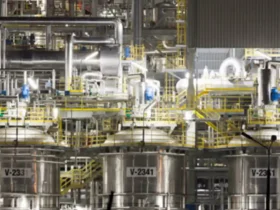
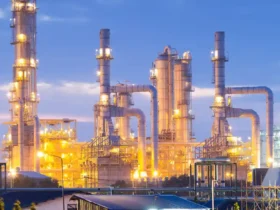
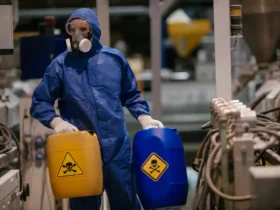

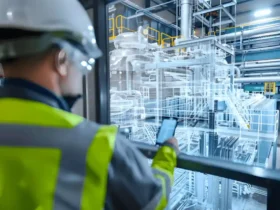
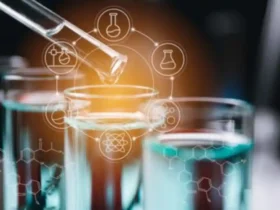
Leave a Reply